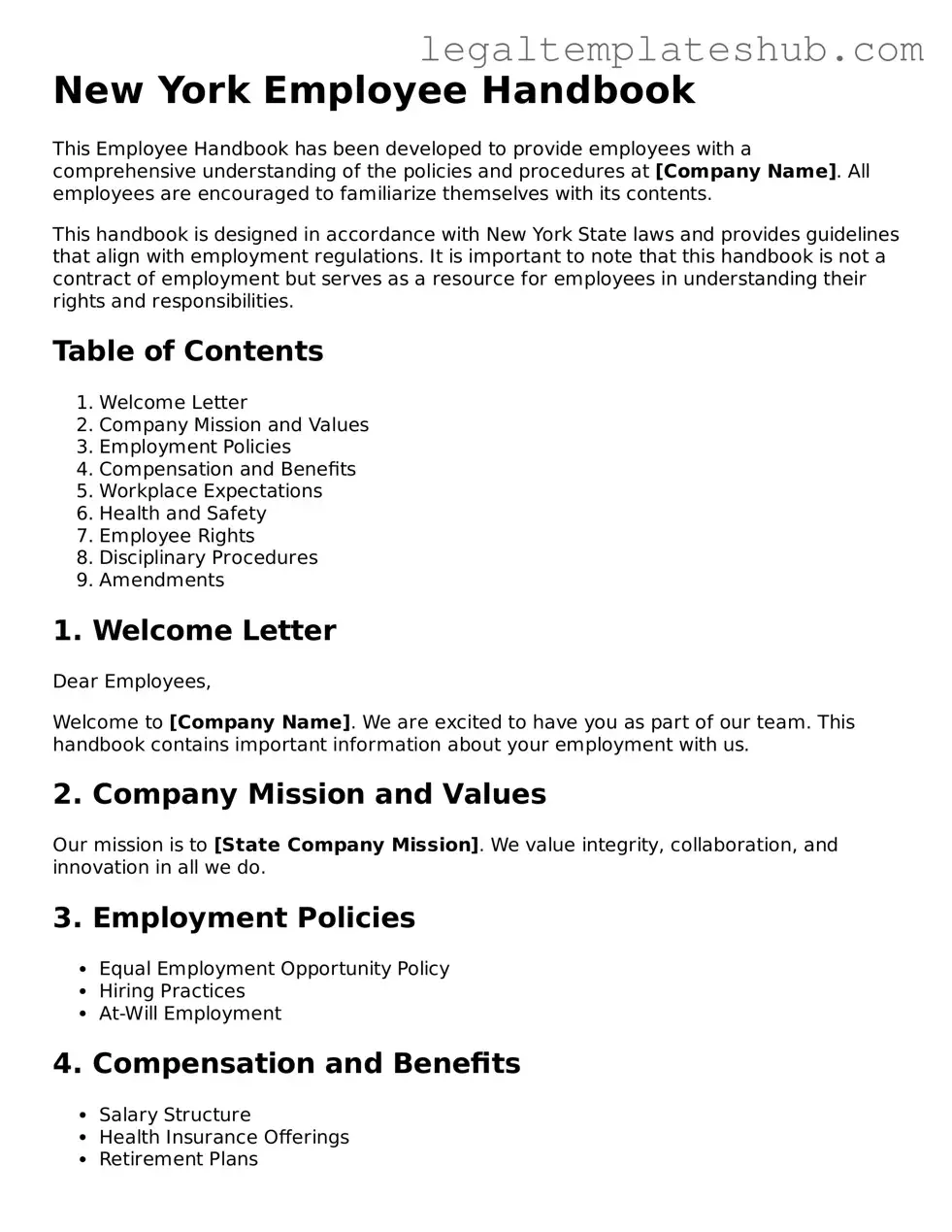Printable Employee Handbook Document for New York
The New York Employee Handbook form serves as a vital document that outlines workplace policies, employee rights, and company expectations. This form not only helps to establish a clear understanding between employers and employees but also ensures compliance with state laws. To get started, fill out the form by clicking the button below.
Access Editor
